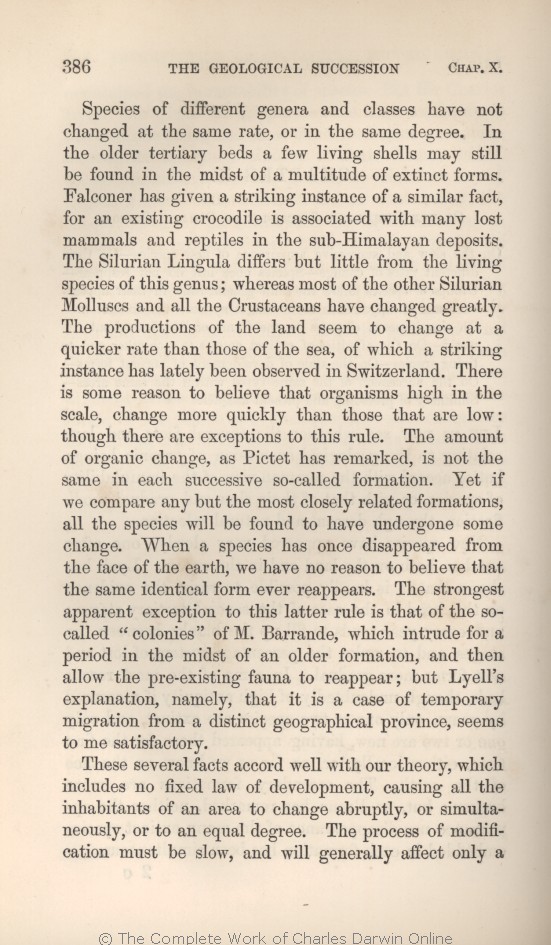Species
of | of 1859 1860 1861 1866 1869 | | belonging to 1872 |
| older 1861 1866 1869 1872 | | oldest 1859 1860 |
| for 1869 1872 | | in 1859 1860 1861 1866 |
| is associated 1869 1872 | | associated 1859 1860 1861 1866 |
| ..... 1869 1872 | | strange and 1859 1860 | | strange 1861 1866 |
| change 1859 1860 1861 1866 1869 | | have changed 1872 |
| lately 1859 1860 1861 1866 1869 | lately 1872 |
| organisms 1866 1869 1872 | | organisms, 1859 1860 1861 |
| ..... 1869 1872 | | considered 1859 1860 1861 1866 |
| scale, 1869 1872 | | scale 1859 1860 1861 1866 |
| ..... 1869 1872 | | of nature, 1859 1860 1861 1866 |
| is 1869 1872 | | does 1859 1860 1861 1866 |
| OMIT 1869 1872 |
| strictly correspond with the succession of our geological formations; so that between each two consecutive formations, the forms of life have seldom changed in exactly 1859 1860 1861 1866 |
| in each successive so-called formation. 1869 1872 |
| degree. 1859 1860 1861 1866 |
| no reason 1861 1866 1869 1872 | | reason 1859 1860 |
| ever 1861 1866 1869 1872 | | never 1859 1860 |
| rule 1866 1869 1872 | | rule, 1859 1860 1861 |
| Lyells 1860 1869 | | Lyell's 1859 1861 1866 1872 |
| to me 1859 1860 1861 1866 1869 | to me 1872 |
|
|
These several facts accord well with
our | our 1869 1872 | | my 1859 1860 1861 1866 |
| theory, 1869 1872 | | theory. 1859 1860 1861 1866 |
| which includes 1869 1872 |
| I believe in 1859 1860 1861 1866 |
| an area 1869 1872 | | a country 1859 1860 1861 1866 |
| ..... 1869 1872 | | extremely 1859 1860 1861 1866 |
| slow, and will generally affect only a few species at the same time; 1869 1872 |
| slow. 1859 1860 1861 1866 |
|









